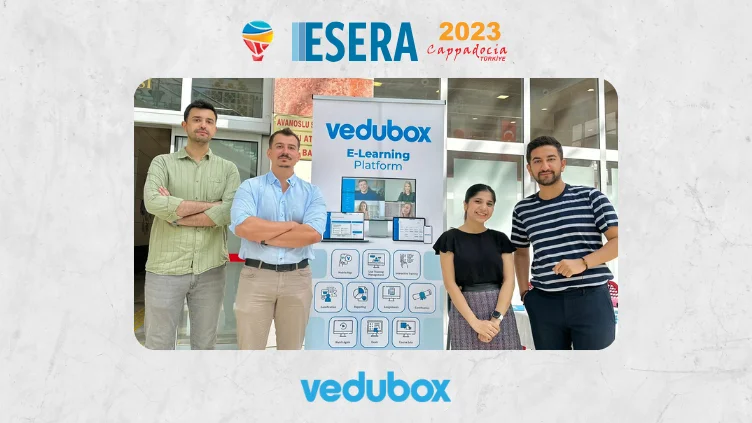Scaling your business involves significant challenges and costs. As a decision-maker, you may hesitate to invest in a Learning Management System (LMS). Sometimes, delaying this expense is justified. However, as your organization grows, there will come a point when integrating an LMS aligns with your long-term strategy.
When your organization is ready to make this transition, the abundance of LMS options can be daunting. Our goal is to provide you, as a leader, with an objective overview of the essential components and considerations in selecting the right LMS for your business.
What an LMS Really Is & Why Businesses Consider One
A Learning Management System functions as more than just a space to host training videos. Businesses can manage, deliver, and track employee training and development programs through an LMS, which can contribute more than their HR operations.
1. Scalability and Efficiency
Traditional, face-to-face training can eat up time and money, especially if your team is spread out or growing fast. An LMS changes the game, making learning possible anytime and anywhere. Ginger Ackerman, Vice President of Sales and Marketing at Jigsaw, cites in an article on The Association for Talent Development website that companies can save 40% on training costs by switching to eLearning.
2. Standardization and Consistency
Making sure everyone gets the same clear, high-quality information isn’t easy — especially if your company is big or people come and go. An LMS puts all your training in one place, so every team member learns the same things and is measured by the same standards.
3. Compliance and Risk Mitigation
For businesses in regulated industries, such as healthcare, finance, or manufacturing, meeting regulatory requirements to avoid fines is crucial. A specialized compliance training platform within an LMS tracks mandatory certifications, delivers required courses, and provides a clear audit trail. According to the DLA Piper GDPR Fines and Data Breach Survey from January 2025, fines for data protection failures can be substantial, and many are linked to training lapses. Similarly, the Occupational Safety and Health Administration (OSHA) provides public data on penalties for workplace safety violations that can be directly linked to inadequate training.
4. Employee Engagement and Retention
Lack of growth opportunities deters employees and contributes to high turnover rates. Modern online learning platforms offer interactive content and personalized learning paths, and features commonly found in gamified learning platforms, such as leaderboards and badges, enhance engagement. The LinkedIn Learning Workplace Learning Report from 2024 consistently highlights the connection between learning opportunities and employee retention. A study cited by Thirst notes that 70% of employees would be at least somewhat likely to leave their current job for one with better development opportunities.
5. Data-driven Insights and ROI
Without an LMS, it’s tough to see what’s working in your training, where skills are missing, or know if your investment is paying off. With the right system, you get clear dashboards and reports that show who’s learning what, who’s finishing courses, and where your team might need extra support. This kind of insight helps you make wise choices about what to teach next.
Does YOUR Business Really Need One? A Self-Assessment
LMS investment decisions are not one-size-fits-all. Executives should conduct a realistic self-assessment of their organization’s unique challenges and goals. Consider these questions:
- Is vital knowledge siloed within specific teams or at risk of disappearing with departing employees?
- Are you facing increasing compliance demands or audit complexities?
- Do you lack clear metrics on training effectiveness or employee skill development?
- Is your team geographically dispersed, making in-person training impractical or impossible?
- Are you spending an excessive amount of time and money on repetitive training sessions?
Your company’s size, growth speed, and industry all play a part. If you’re running a small business, you might get by without an LMS at first. But as things pick up, your training needs can change immediately. Bigger companies often need an LMS just to keep up. In fields like healthcare or finance, compliance training is a must, while tech companies need tools that help people learn new skills fast.
If you’re making the call, weigh the upfront cost of an LMS against what it might cost you to do nothing — lost time, compliance headaches, or a team that feels left behind. Think about whether you can handle the system in-house, or if you’ll need a helping hand.
What to Look For in LMS Platforms
If you decide it’s time for an LMS, don’t rush. Take a close look at what’s out there, and focus on the features that matter most for your team.
Core Components
- User Management: Look for easy enrollment and role-based access.
- Content Delivery: The platform should support various formats like SCORM, video, and documents, with an intuitive course builder.
- Assessment Tools: Quizzes, assignments, and surveys are essential for evaluating learning.
- Reporting & Analytics: Dashboards, completion rates, and performance insights provide crucial data for informed decision-making.
Advanced Features
- Mobile Learning: Ensures accessibility on all devices.
- Integrations: Connects with existing systems, such as HRIS, CRM, or single sign-on (SSO) platforms.
- Social Learning: Includes forums, wikis, and collaborative tools.
- Gamification: Features like badges, leaderboards, and points to increase engagement.
- Personalization & AI: The ability to offer adaptive learning paths and skill gap analysis.
- Certifications & Compliance Tracking: Specific tools for managing certifications and tracking renewal dates.
User Experience (UX) - For Both Learner and Administrator
A good LMS should feel easy from the start. For your team, a clean, simple interface makes learning less of a chore. For those running the show, managing courses and users should be straightforward. It’s also worth finding a platform you can make your own — a white label LMS — so the learning experience fits right in with your company’s style.
Scalability, Security, and Support
Will your LMS keep up as your business grows? Make sure the provider can handle more users and content without slowing down. Data security is a must, so check that the platform meets tough standards like GDPR. And don’t overlook customer support — a helpful team can make all the difference when you’re getting started.
Pricing Models
LMS platforms price things in all sorts of ways — by user, by tier, or with a one-time fee. Take time to figure out which setup fits your budget before you decide.
Misconceptions & Pitfalls
- It’s Only for Huge Corporations: This is a common myth. Many modern LMS platforms are scalable and offer pricing models that cater specifically to small and medium-sized businesses.
- It’s Too Expensive: Yes, an LMS costs money up front. But think about what you’ll save — less travel for training, less time spent on paperwork, and a team that sticks around longer. Often, those savings add up fast.
- Just Buy One and Problems Disappear: An LMS isn’t a magic fix. You’ll still need a plan for what to teach and how to keep people interested. The real results come from building or choosing content that matters.
- Underestimating Implementation: Getting started with an LMS takes real planning, from moving over your old content to ensuring your team actually uses it. It’s not just a quick setup — having a clear plan makes all the difference.
Not every business needs an LMS right away, but more and more leaders are finding these systems hard to live without. The right choice depends on your own challenges and goals. Take the time to weigh your needs and the risks, and you’ll be able to move your company and your people forward.
Vedubox offers a flexible LMS platform suited to a range of business scenarios. Schedule a personalized demo to explore whether our solution aligns with your strategic objectives.




















